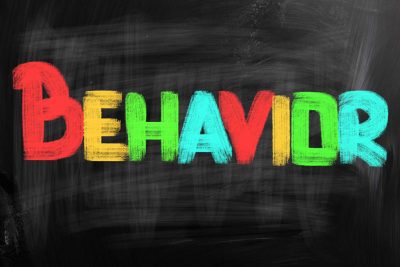When the behavior of a student with an IEP gets in the way of his or her learning or that of others, the IEP team must develop behavior goals or a behavior plan. Behavior plans are not punitive. They are positive plans describing how the school will support positive behavior through instruction or changing the environment. Behavior plans also describe how often the behavior happens, how long it lasts, and how intense it is. Triggers for the behavior and the purpose the behavior serves also are described.
Next steps:
When behavior results in school discipline, Special Education regulations outline when and how students can be disciplined. Adding or reviewing an existing behavior plan is key.
Request a Functional Behavior Assessment (FBA) in writing. This assessment is designed to help determine the function, frequency, duration, intensity, and the triggers of the behavior(s).
The IEP team will meet to review the FBA evaluation and to develop IEP goals to address the behaviors.
If the behavior is serious enough to get in the way of your child’s education and IEP goals, a Behavior Intervention Plan (BIP) must be created by the IEP team.
Creating a Behavior Intervention Plan with Positive Behavioral Supports:
Behavior plans are positive plans for the staff to use when working with a student.
Be prepared to share with the team what you know works for your child for positive behavior.
As with any goal, start with a baseline or present level of performance that describes the current skills.
Both the present level and goal need to be specific and measurable and written in a way that anyone who reads the goal sees a picture in his or her mind.
How progress on the goal will be measured should also be noted.
The goal should include which school staff member is responsible to teach the skills in the goal.
The student or parent should not be listed as people responsible for the goal.
Behavior plans are positive plans for the staff to use when working with a student.
Behavior replacements should be implemented – positive behavior goals are created so that your child can use them to meet the need of either protesting or trying to get something, more appropriately.
Teaching methods, steps, or a curriculum for your child must be created to help them to learn the desired behavior, and must include who will do this and how it will be monitored.
The environment must be considered: what is in the environment or missing from the environment that may be causing the behavior?
Behavior plans are written for specific environments. A student’s behavior may be fine in one setting and not in another.
Reinforcements are key: what will reinforce the use of the positive behavior? It should be something the student values, such as positive praise, stickers, extra computer time, etc. It may need to be changed at times if the student loses interest in the item or action.
Communication must be included—Plan on who, what, and how communications will take place about the student’s behavior. It could be a weekly behavior chart sent by email to the parent and psychologist at the end of each week, or a phone call to the parent and behaviorist for any behavior resulting in school discipline.
FINALLY – A Behavior Intervention Plan can be revised at any time. If it’s not working for your child, request an IEP Team meeting to discuss revising/amending the plan.
The PAVE Parent Training and Information Program may include information on State or Federal laws regarding the rights of individuals with disabilities. While this is provided to inform or make one aware of these rights, legal definitions, or laws/regulations, it is not providing legal representation or legal advice. The recipient understands that this is information is to educate them not to provide them with legal representation.

